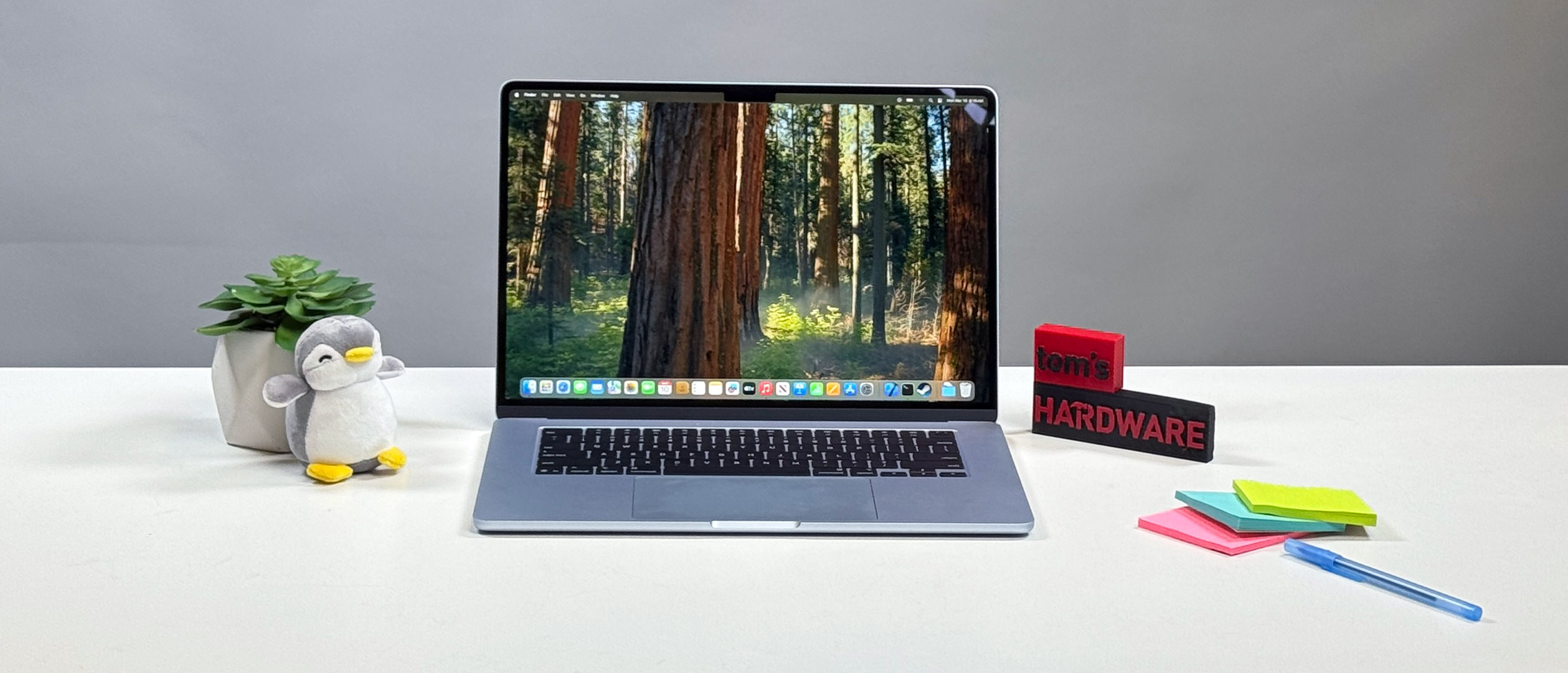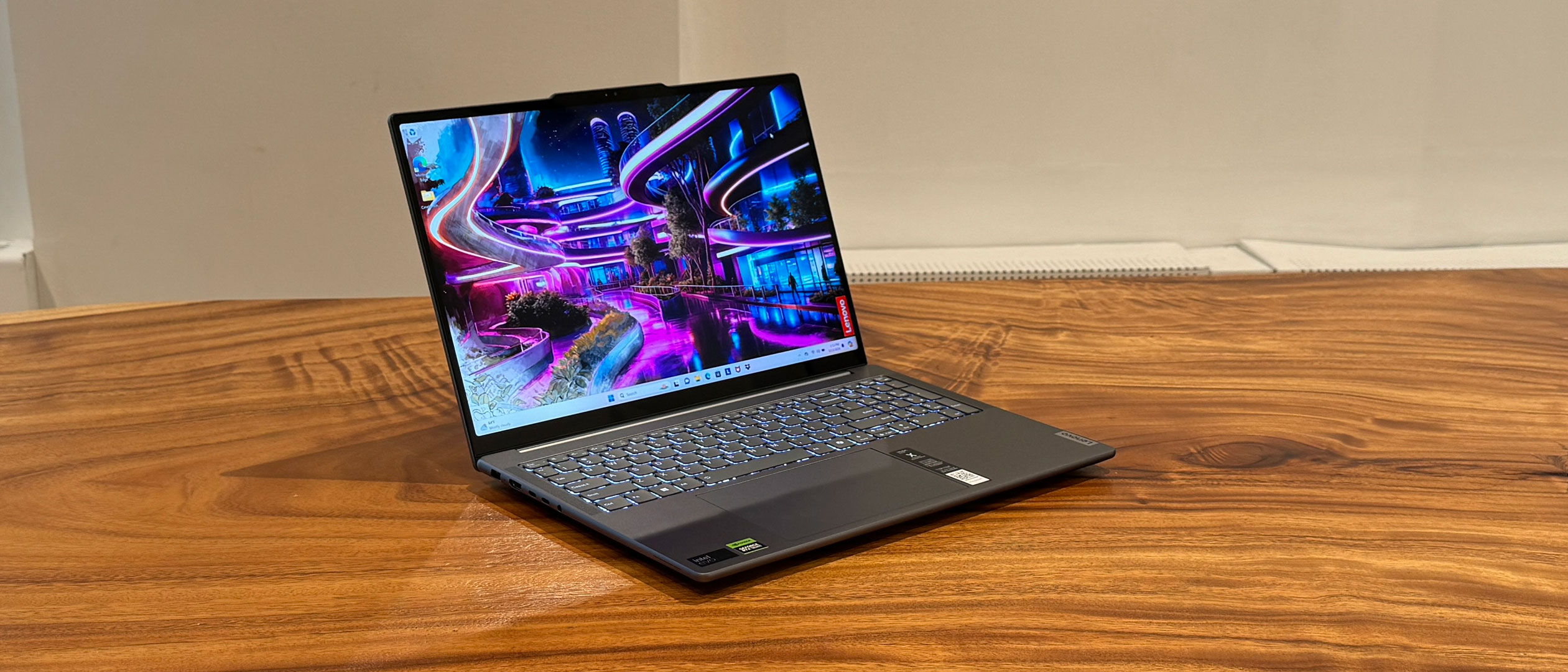Best College Laptops: Tested Picks for Research, Writing, Gaming and More
College laptops fit for any student.

For a college student, there is no more important tool than a laptop. It's a catch-all for note-taking, studying, homework, collaboration, procrastination (don't tell your professors), and extracurricular activities. When you pick one, you're likely choosing a tool for at least four years of education, if not further studies or just life after college.
Picking a college laptop can feel like homework in itself. There are a ton of laptops on the market, and you may get some help by checking out recommendations from your school or department. In our opinion, most students should prioritize portability, battery life and then performance, unless your school recommends something specific.
This semester, the latest parts in laptops include Intel's Core Ultra Series 2 CPUs, AMD's Ryzen AI 300 processors, Apple's M4 chips, and Nvidia's RTX 50-series GPUs. Looking ahead, there's rumors of a budget MacBook that could be a serious player on college campuses.
If you're taking classes remotely, be sure to take the webcam into consideration. More and more laptops are finally getting 1080p webcams or better, which often include higher-quality lenses for better images. (Many, but not all, also have privacy shutters for when you're not making calls.)
Also, don't forget whatever student discounts are available. Many vendors may give you some percentage off, a gift card, or a free extra when you can prove that you're a student, either with a .edu email address or a college ID card.
Best College Laptops You Can Buy Today
Why you can trust Tom's Hardware
Best College Laptop Overall
Specifications
Reasons to buy
Reasons to avoid
Apple's MacBook Air is reliably one of the most popular notebooks on college campuses. It's thin, fanless, and the latest sky blue color will be sure to attract some attention.
Whether you're taking a virtual class or just calling home, Apple has bumped up the webcam to 12MP, which will make you look sharper than ever. The M4 chip also supports two external displays while you have the lid open, which is a bump up from M3.
Perhaps most important, the MacBook Air is $100 cheaper than the previous model, starting at $999 for the 13-inch laptop and $1,199 for the 15-inch notebook. That being said, upgrade pricing for more RAM or storage is outrageous.
In our testing, we found the 15-inch MacBook Air ran over 15 hours on a charge, so you shouldn't have to worry about charging it too much between classes. And the 15-inch notebook has powerful speakers alongside its large display, making it a great multimedia machine.
Read: MacBook Air (M4) review
Best College Laptop for Notetaking
Specifications
Reasons to buy
Reasons to avoid
The Microsoft Surface Pro is a sleek, portable system that's easy to take with you, and is great for notetaking with a pen. Add in long battery life, and you have a study tool that can go with you from class to class.
The Qualcomm Snapdragon X Elite chip has enough power to keep up with x86. Thanks to an increasing number of Arm-compatible apps, including Google Chrome, you won't be missing out on a lot from Intel and AMD machines. That being said, you'll want to make sure any dedicated software you use for class will work.
Qualcomm's NPU, with 45 TOPS, is great for Windows Studio effects, but mostly these effects are cool tricks for now. Don't buy this just for AI. But if you want a great note taking device that's extra slim, it's worth considering. Just don't forget to add a keyboard and stylus to the base price.
Read: Microsoft Surface Pro review
Best 2-in-1 College Laptop
Specifications
Reasons to buy
Reasons to avoid
If you want a laptop that can flip into a tablet, the Lenovo Yoga 9i 2-in-1 is our top choice. It combines a gorgeous OLED touchscreen, great build quality, and long battery life into one package.
You might question having a 2880 x 1800 resolution on a 14-inch screen, but it obliterated competing notebooks when measuring for color volume.
The system looks nice, too, with a "cosmic" blue color that will stand out in a lecture hall full of black and gray laptops. The laptop is built like a tank (even if there are some quirky design elements blending rounded edges and flat corners) and has a clicky keyboard. You also get a 5MP webcam, great for presentations, virtual classes, and calling your family.
If you want to make DIY upgrades, this machine is tough to repair, but that probably won't bother the majority of students.
Read: Lenovo Yoga 9i 2-in-1 Aura Edition review
Best College Laptop with a GPU
Specifications
Reasons to buy
Reasons to avoid
Some majors, like engineers, graphics designers, or some programmers, may need a bit of extra graphics power. That's where having a discrete GPU comes in. We tested the Lenovo Yoga Pro 9i with an RTX 4050, along with a beautiful 16-inch, 3200 x 2000 display.
The Yoga Pro 9i also has an excellent 5MP webcam for when classes are remote, and deep key travel for taking notes. The display could be a bit brother, and there's a bit of bloatware you may want to remove. But the Yoga came in cheaper than some competing laptops, like the Dell XPS 16, with a discrete graphics card.
Those who like to tinker will appreciate the extra SSD slot, which you can use to bulk up storage.
Read: Lenovo Yoga Pro 9i review
Best College Laptop for Business Majors

Specifications
Reasons to buy
Reasons to avoid
For business majors who want to get a feel for the type of laptop their first job will give them, there's the Lenovo ThinkPad X1 Carbon (Gen 13). The 13th Gen "Aura Edition" laptop is lighter than ever at just 2.17 pounds.
We loved the keyboard on the TrackPoint, which is snappy and tactile. And the TrackPoint in the middle of the notebook means that you never have to remove your hands from the home row if you don't want to.
The X1 Carbon also has plenty of ports, including two Thunderbolt 4/USB Type-C ports, a pair of USB Type-A ports, HDMI to connect to a monitor, and a headphone jack.
In our testing, the X1 Carbon ran for 11 hours and 28 minutes on a charge. That's not bad, but competitors lasted hours longer. You'll want to top this one off every night.
Read: Lenovo ThinkPad X1 Carbon (Gen 13) review
Quick College Laptop Shopping Tips
💻 Consider your major or specialization
Science majors and liberal arts majors may have different needs. An engineering major working with computer-aided design software might want a notebook with a discrete graphics card, while students who primarily do research and write papers may be fine with a thin ultrabook. Your school or department may also have recommended specifications (as well as a list of software that you'll need to run), so be sure to check those out.
💻 Learn if your work will live locally or in the cloud:
Find out if your school or department uses cloud storage, such as Google Drive or Microsoft OneDrive. If they do, you may be able to get by with less internal storage. Of course, if you want your own copies of your work or would like to keep personal files as well as school files, budget for a bit of extra space.
💻 Weight and battery life matter
After all, you'll be carrying this laptop around all day in a backpack as you move from class to class. Lightweight and long battery life can both save your back and leave more room for books.
💻 Consider how you take notes
A good keyboard is always important, especially when you're writing papers. But some students still prefer to take notes by hand, and those people will want to consider a convertible or detachable 2-in-1 with a stylus.
💻 See if you can get a student discount
Some stores will offer you a discount with your proof of affiliation with a university or college. It's also possible that your school will have a relationship with a vendor for deals on certain models. Others may just throw in a gift card or some free earbuds. If you can find a deal, great; school is expensive enough.
Finding Discounts on the Best College Laptops
Whether you're shopping for one of the best gaming laptops or another model that didn't quite make our list, you may find some savings by checking out our lists of Dell coupon codes, HP coupon codes, Lenovo coupon codes, Razer promo codes or Newegg promo codes.
Tom's Hardware Gaming Laptop Coverage
Best Premium Laptops | Best Gaming Laptops Under $1,500 | Laptop Reveiws | Apple MacBook Pro (M5) Review | Apple MacBook air (M4) Review | Lenovo Yoga 9i 2-in-1 Review | Dell 16 Premium Review | Lenovo ThinkPad T14s Review | How to Upgrade a Laptop SSD | How to Upgrade Laptop RAM
Get Tom's Hardware's best news and in-depth reviews, straight to your inbox.

Andrew E. Freedman is a senior editor at Tom's Hardware focusing on laptops, desktops and gaming. He also keeps up with the latest news. A lover of all things gaming and tech, his previous work has shown up in Tom's Guide, Laptop Mag, Kotaku, PCMag and Complex, among others. Follow him on Threads @FreedmanAE and BlueSky @andrewfreedman.net. You can send him tips on Signal: andrewfreedman.01
-
RebeliusGaming I had you as a referent, but Apple laptop as number 1 option for gaming?.... It has to be a mistake.Reply -
aindriu80 This list makes no sense at all, going to college with the highest-end machines consumers can purchase??, what about the college part?Reply -
shady28 Bad list.Reply
In college you want something light, good battery life, a good adjustable screen, decent keyboard, and fairly rugged. Those are paramount. Gaming is a far distant concern. A lot of corporate laptops fit this bill
A big bulky low battery life Nitro 5 is horrible. You'll look really dense sitting in a classroom with that thing and its huge power brick. Which means it'll sit in the dorm.
The Surface would be perfect, but that's a $1500+ laptop there. You probably should have set a price limit of $800 or so.
The XPS, beyond being expensive, again you picked a 15" model. Do you guys imagine a bunch of students in class with 15" screens on their 12" wide flip up tables? I mean yes, get a 27" 1440p IPS monitor for the dorm, the laptop needs to be usable in class.
The Mac would be the perfect form factor with a great screen and solid construction, but unless you are going for a media related degree like graphic design or some such, it is a no go. Too much requires Windows software. It's also expensive.
There are plenty of options out there but this list is trash. -
JimboCA Mac may be out of the budget of many college students. I have both PC and Mac laptops. The PC laptop is necessary for PC-specific applications. In my work, I need MS Visio. The Mac substitutes do not work for me as well. I love the Mac for its intuitive layout.Reply
On the PC side, I like the HP laptops. I have a Z Book 17 (not the best for lugging around, however it has a top notch discrete graphics card and 32 gb of RAM. I have a smaller HP for portability's sake. The elite book is small and fairly powerful.
The best considerations need to be:
What software do I need to run?
How portable do I need it to be?
What kind of battery life do I need?
There are great choices that fit the spectrum. -
walldoo99 Reply
I never heard of anyone gaming from a mac.Admin said:, portability and the power to tackle everything your major requires. Our list includes Windows PCs, Macs and some gaming systems for those who like to play when they aren't working. -
walldoo99 Reply
I sell used laptop with great battery life for a fractopn of what they are charging.Admin said:The best college laptops offer great battery life, portability and the power to tackle everything your major requires. Our list includes Windows PCs, Macs and some gaming systems for those who like to play when they aren't working.
Best College Laptops: Tested Picks for Research, Writing, Gaming and More : Read more -
walldoo99 Reply
I have some client that are student and need the 15" workstation like the W520 and W530 for cad rendering, video editing and such. I feel sorry for them lugging that beast arond , but the Dell equivilant weighs almost twice as much. But they are still cheaper than the a fraction of what these sell for.shady28 said:Bad list.
In college you want something light, good battery life, a good adjustable screen, decent keyboard, and fairly rugged. Those are paramount. Gaming is a far distant concern. A lot of corporate laptops fit this bill
A big bulky low battery life Nitro 5 is horrible. You'll look really dense sitting in a classroom with that thing and its huge power brick. Which means it'll sit in the dorm.
The Surface would be perfect, but that's a $1500+ laptop there. You probably should have set a price limit of $800 or so.
The XPS, beyond being expensive, again you picked a 15" model. Do you guys imagine a bunch of students in class with 15" screens on their 12" wide flip up tables? I mean yes, get a 27" 1440p IPS monitor for the dorm, the laptop needs to be usable in class.
The Mac would be the perfect form factor with a great screen and solid construction, but unless you are going for a media related degree like graphic design or some such, it is a no go. Too much requires Windows software. It's also expensive.
There are plenty of options out there but this list is trash. -
passivecool IMHO an idiotic set of parameters by which to judge this category. Poor Andrew, a victim of TH intel+gaming brainwashing. I like to follow TH but if you are looking for advice for this segment, click on...Reply -
My son loves the hp ultrabook. AMD powered and only was $600Reply
I would never buy the intel part. Lol. They run super hot. They are also inefficient. I’ll be sticking with AMD
These articles are generally terrible



